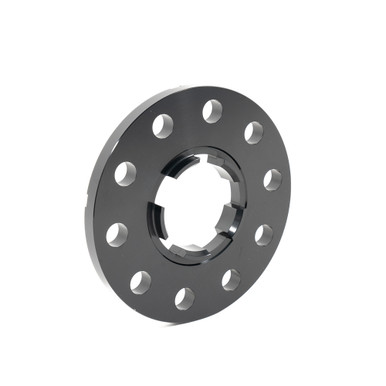I run Rennline 10mm front and 12mm rear spacers on my 2018 Cayman GTS with 20" wheels (the brand of spacer is not important - this issue can happen with any spacer and is not the fault of the spacer manufacturer). I recently came across this video on Youtube, which prompted me to look at the fit of my own spacers. Sure enough, my spacers were exhibiting the exact problem identified in this video. In examining the fit further, the spacers sat snugly on the rotor hub, but wobbled ever so slightly (and failed the paper test) when placed against the wheel. The evidence of this is a shiny band on the bevel of the wheel spacer where it contacts the inner edge of the wheel (See red arrow in photo below). To correct this, I picked up a 45 degree. 5" chamfering cone, and beveled the inner lip of each wheel until the spacers sat snugly with no wobble. I thought I'd pass this along as an important safety tip for anyone else that is running spacers. Losing a wheel (and likely crashing) due to this would really suck.
Wheel inner edge before:
![Image]()
Shiny ring on spacer is evidence of poor contact:
![Image]()
Chamfering cone:
![Image]()
After - perfect fit:
![Image]()
Wheel inner edge before:
Shiny ring on spacer is evidence of poor contact:
Chamfering cone:
After - perfect fit:






